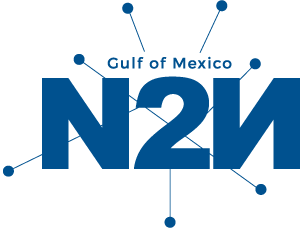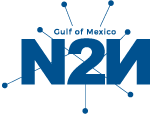What is N2N-GoM?
N2N-GoM is an organization that emerged from the convergence of multiple social, economic, and environmental interests, shared by an international and interdisciplinary team of academic, industrial, government, and community-based leaders with a vested interest in the Gulf of Mexico.
Pursuing a common massive transformative purpose for the GoM by:
“Leveraging the Power of Network Collaborations”








